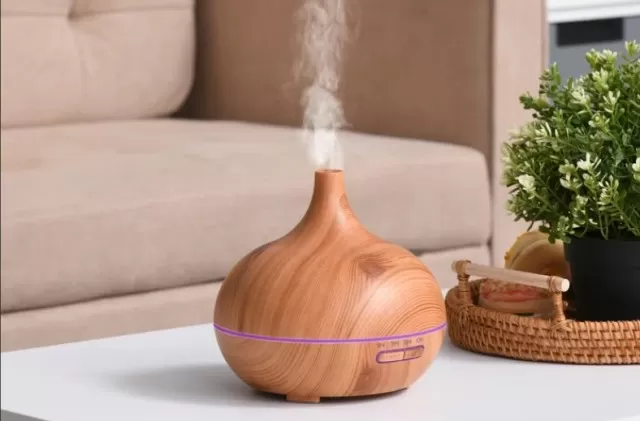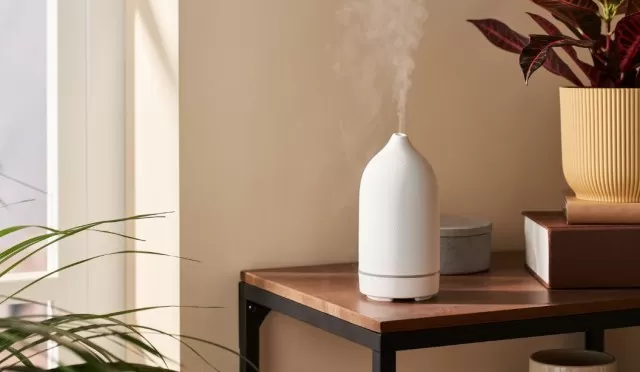If you rely on humidifiers to combat the discomfort of dry air in your home, it’s crucial to be aware of the potential risks they pose when not properly cleaned.
While these appliances offer relief from parched sinuses, dry skin, and throat irritation, neglecting regular maintenance can lead to the growth of mold and microbes inside the humidifier.
Unfortunately, these pollutants can be released into the air along with the water vapor, causing health concerns, particularly for individuals with asthma, allergies, or respiratory issues.

To ensure a healthy and clean environment in your home, we’ve compiled expert tips on how to effectively clean your humidifier and maintain its cleanliness.
While it’s always essential to consult the manufacturer’s instructions for specific guidelines based on your humidifier model, the following cleaning steps are generally applicable to both cool mist and warm mist humidifiers. By diligently following our instructions, you can prevent the spread of bacteria and maintain a safe and efficient humidifier, contributing to improved indoor Air Quality and overall well-being.
How to Properly Clean and Maintain Your Humidifiers

Maintaining a clean and hygienic humidifier is essential to ensure that it operates efficiently and provides healthy moisture to your living space.
Here’s a step-by-step guide on how to clean your humidifier effectively:.
Disassemble the Humidifier: Begin by unplugging the humidifier and carefully disassembling it.
Remove the water tank and any other removable parts, such as filters or caps.
Vinegar Cleaning: White Vinegar is a powerful natural cleaning agent that can effectively remove scale buildup and bacteria from your humidifier.
Fill the water tank with enough white vinegar to cover areas that come into contact with water. If needed, you can dilute the vinegar with warm water for a gentler cleaning solution.
For smaller parts, like the tank cap, soak them in a container filled with vinegar for about 20 minutes. After soaking, use a soft-bristled brush or a toothbrush to scrub away any residue and deposits.
Disinfect the Humidifier: After the vinegar cleaning, it’s essential to disinfect the humidifier to eliminate any remaining bacteria.
Prepare a solution of 1 teaspoon of liquid chlorine bleach and 1 gallon of cold water. Fill the humidifier tank halfway with this solution and swish it around to coat the interior.
Let it sit for 20 minutes to ensure effective disinfection.
Rinse and Dry: Thoroughly rinse each part of the humidifier with running water to remove any traces of vinegar or bleach.
Make sure to rinse multiple times until the smell of bleach is gone completely. Allow all the parts to air dry before reassembling the humidifier.
How Often to Clean Your Humidifiers

Regular maintenance is crucial to keep your humidifier running smoothly and to ensure it provides clean, healthy moisture.
Here are some Cleaning Tips to follow:.
Daily Maintenance: Empty the water tank and refill it with fresh water daily.
Fresh water ensures that the mist generated by the humidifier is clean and free from any contaminants.
Dealing with Hard Water: If you have hard water, which contains minerals, it’s essential to take precautions to prevent mineral buildup in your humidifier.
Consider using a demineralization cartridge designed for your specific humidifier model or opt for distilled water instead of tap water.
Weekly Cleaning: Perform a thorough cleaning of your humidifier Using Vinegar and bleach at least once a week.
This regular maintenance will prevent scale and bacteria buildup and keep your humidifier in excellent condition.
Seasonal Cleaning: Before storing your humidifier at the end of the dry season, make sure to clean it thoroughly to remove any remaining water and bacteria.
This step will ensure that your humidifier is ready to use when you need it again.
By following these cleaning and maintenance tips, you can keep your humidifier functioning optimally, providing clean and refreshing moisture to your home throughout the year.
A well-maintained humidifier not only improves indoor air quality but also contributes to a healthier living environment for you and your family.
*The information is for reference only.